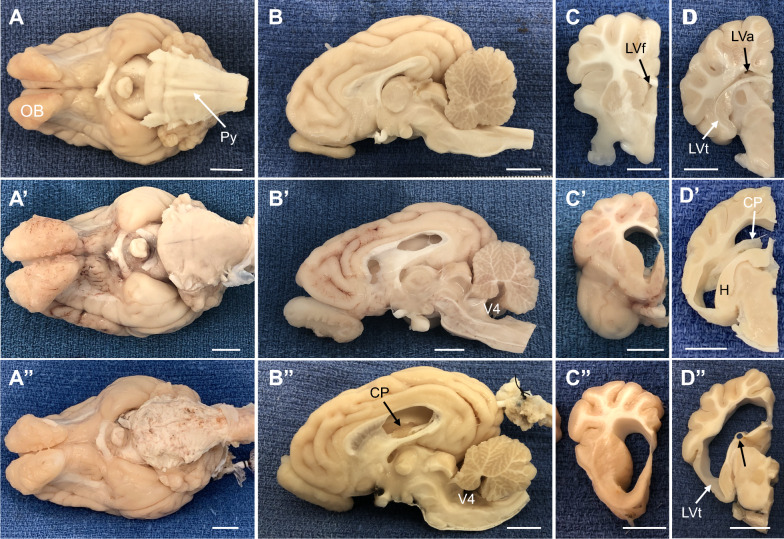Fig. 3.
Representative gross morphological features of post-mortem non-hydrocephalic and untreated hydrocephalic pig brains (cases 21 and 9, respectively). In all cases, C and D columns contain coronal views from the same case as the midsagittal section in B. A–D In a sham control 93-day old animal, the myelinated pyramids (Py) were prominent and the atria (LVa), frontal horns (LVf), and temporal horns (LVt) of the lateral ventricle were small or slit-like. A′–D′ At 81-days old, kaolin deposits in the basal cisterns (BC) obscured the pyramids and ventriculomegaly was prominent throughout the ventricular system, including the 4th ventricle (V4). A″–D″. Shunted animals all retained the kaolin obstruction in the basal cisterns, and in some cases (this example), the ventricles were not reduced in size and the cortex lateral to the temporal horn (LVt) remained thin. The ventricular catheter contacted the choroid plexus (CP) but retained some open drainage holes, and a portion the catheter track (black arrow in D″) penetrated the fimbria. H—hippocampus. Scale bars–10 mm

